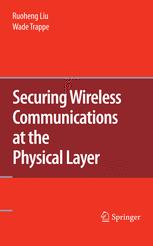

Most ebook files are in PDF format, so you can easily read them using various software such as Foxit Reader or directly on the Google Chrome browser.
Some ebook files are released by publishers in other formats such as .awz, .mobi, .epub, .fb2, etc. You may need to install specific software to read these formats on mobile/PC, such as Calibre.
Please read the tutorial at this link: https://ebookbell.com/faq
We offer FREE conversion to the popular formats you request; however, this may take some time. Therefore, right after payment, please email us, and we will try to provide the service as quickly as possible.
For some exceptional file formats or broken links (if any), please refrain from opening any disputes. Instead, email us first, and we will try to assist within a maximum of 6 hours.
EbookBell Team

4.7
26 reviewsWireless systems are becoming increasingly pervasive and securing these systems has been challenging, in large part due to the unique properties associated with wireless communications. Securing these networks has traditionally been approached by taking a conventional approach involving cryptographic protocols. Such an approach inherently seeks to secure the wireless network at the link layer and above, and consequently fails to leverage the most unique characteristic of wireless communication: its physical layer.
Securing Wireless Communications at the Physical Layer is a compilation of contributions by experts in wireless communications and security, and presents state-of-the-art results that examine the challenge of introducing security at the physical layer of a wireless system. Throughout this book there is an underlying theme that the rich multipath environment that is typical of wireless scenarios supports the establishment of new security services at the physical layer, including new mechanisms that establish cryptographic keys, that support communication with assured confidentiality, and that can authenticate transmitters in mobile environments. The book takes a holistic approach to covering topics related to physical layer security solutions, with contributions ranging from the theoretical underpinnings behind secure communications to practical systems validations that have been performed on real wireless systems. The book also covers topics related to ensuring that cooperative wireless communications at the physical layer is trustworthy. Additionally, the emerging area of modulation forensics, whereby a device is able to identify the modulation format being employed by other devices is explored.
Securing Wireless Communications at the Physical Layer will serve as a valuable reference to engineers and researchers in the fields of security and wireless communications.